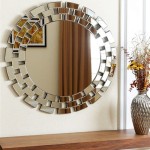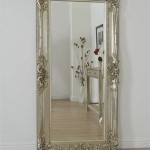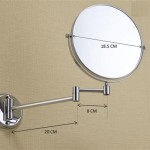Is a Car Rear View Mirror Convex or Concave, or Plane?
Understanding the type of mirror used in a car's rearview system is crucial for safe driving. Different mirror shapes offer unique advantages and disadvantages related to field of view and image distortion. This article examines the properties of plane, convex, and concave mirrors and clarifies which type is typically used for a car's rearview mirror.
Properties of Plane Mirrors
Plane mirrors are flat, reflective surfaces. They produce a virtual image that is the same size as the object being reflected. The image is also upright and appears to be located the same distance behind the mirror as the object is in front of it. While providing a true representation of size and distance, the field of view offered by a plane mirror is limited.
Properties of Convex Mirrors
Convex mirrors, sometimes referred to as diverging mirrors, curve outward. They produce a virtual, upright, and diminished image. This means the reflected object appears smaller than its actual size. The key advantage of a convex mirror lies in its wider field of view compared to a plane mirror, allowing the driver to see a larger area behind the vehicle. The disadvantage is that objects appear farther away than they actually are.
Properties of Concave Mirrors
Concave mirrors, also known as converging mirrors, curve inward. They can produce both real and virtual images depending on the object's distance from the mirror. When the object is close to the concave mirror, the image is virtual, upright, and magnified. When the object is farther away, the image becomes real, inverted, and can be either magnified, diminished, or the same size. While offering magnification in certain situations, the field of view of a concave mirror is generally narrower than that of a convex mirror.
The Standard Rearview Mirror: Convex
Passenger-side rearview mirrors in most vehicles are convex mirrors. The curvature allows for a wider field of view, enabling the driver to see more of the adjacent lane and reduce blind spots. The "objects in mirror are closer than they appear" warning printed on these mirrors acknowledges the image distortion inherent to convex mirrors. The diminished size of the reflected image contributes to the perception of increased distance.
The Driver's Side Rearview Mirror: Plane or Aspherical
The driver's side rearview mirror is typically a plane mirror, providing a less distorted view of the area directly behind the car. This maintains a more accurate representation of the size and distance of vehicles following directly behind. However, some vehicles utilize an aspherical mirror on the driver's side. These mirrors combine a plane section with a convex section to broaden the field of view while minimizing distortion in the primary viewing area.
Why Not Concave Rearview Mirrors?
Concave mirrors are unsuitable for rearview mirrors due to their image characteristics. While they can magnify objects, their limited field of view would severely restrict the driver's overall perspective of the surrounding traffic. Additionally, the inversion and magnification of images at certain distances could be disorienting and potentially dangerous.
The Importance of Proper Mirror Adjustment
Regardless of the mirror type, proper adjustment is essential for maximizing visibility and driving safety. Drivers should adjust their rearview mirrors to minimize blind spots and provide a clear view of the areas behind and to the sides of the vehicle. Regularly checking and adjusting mirrors is a fundamental part of safe driving practice.
Understanding the Trade-offs
The choice of a convex mirror for the passenger-side rearview reflects a conscious trade-off. The wider field of view afforded by the convex shape outweighs the disadvantage of image distortion. Drivers learn to compensate for the perceived increased distance by experience and by relying on the driver-side mirror for a more accurate representation of distance.
Variations and Future Developments
While the standard remains a convex passenger-side mirror and a plane or aspherical driver-side mirror, advancements in automotive technology are leading to innovations in rearview systems. Digital rearview mirrors, which use cameras to project a wider, unobstructed view onto a screen, are becoming increasingly common. These systems can potentially eliminate blind spots and offer enhanced visibility in various driving conditions.
Legal Requirements and Regulations
Regulations concerning rearview mirrors vary by jurisdiction. Most regions mandate the inclusion of both driver-side and passenger-side rearview mirrors, with specifications regarding their size, placement, and reflectivity. The use of convex mirrors is generally permitted and even encouraged on the passenger side to enhance the driver's field of view and improve safety. Staying informed about local regulations related to vehicle mirrors is crucial for ensuring compliance and safe driving practices.

Convex And Concave Mirrors In Cars
Why Do We Prefer A Convex Mirror As Rear View In Vehicles Quora

Convex Mirrors Use Car

Concave Vs Convex Mirrors In Cars
Why Is A Convex Mirror Preferred For Use As Driving Over Plane Quora
Why Do We Prefer A Convex Mirror As Rear View In Vehicles Quora
Why Is A Convex Mirror Preferred For Use As Driving Over Plane Quora

Convex Concave Mirror Car Motorcycle Rear View Glass China Silver Made In Com

Types Of Mirror For Vehicles Concave Vs Convex Sunway Autoparts
Why Is A Convex Mirror Preferred For Use As Driving Over Plane Quora








